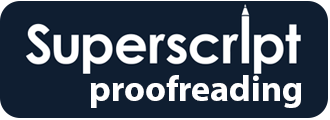I often come across authors’ translations into English when I’m copy-editing and proofreading academic texts. These are mainly translations of interviews that the author (usually based in the EU and whose first language isn’t English) has conducted with participants during their research. These crop up in PhD theses fairly regularly, and this is the type of translation I refer to in this post.
I always suggest that the client checks with their supervisor(s) regarding whether they are permitted to edit their translations of interview transcripts. I also recommend that they check the relevant regulations of their academic institution.
(Above image by OpenCliparts-Vectors from Pixabay)
Proofreading unclear parts of translations
Translations of an interview should reflect as accurately as possible how the person who was interviewed spoke and the words they used. But in conversation, most of us sometimes use confusing or unclear language. We also use words that don’t quite convey what we mean, ambiguous wording, clunky grammar, and syntax that sounds awkward.
I don’t think that ploughing through a translation ‘correcting’ all of this is ethical or helpful. But a happy medium can be reached. A translation that is not perfect grammatically or in terms of syntax may be the best option for accurately reflecting what was said. And it can still be easy for readers to read and understand.
Proofreading solutions I apply
- Using a light touch. I think this is the best way of ensuring that the voice and language style of the interviewee remain intact.
- Making minor suggestions via tracked changes but for bigger issues adding a comment pointing out why the wording is difficult to read or understand. I will suggest alternative wording that may work but will ask the author to check carefully against the original transcript to ensure that the final translation is as accurate as possible.
- Adding words in square brackets if I feel they’re needed to help the reader understand what’s being said. But I do this sparingly because it’s not often essential and can be intrusive.
- Flagging any parts of the translation that I feel are stilted. If that’s exactly how the person sounded, the translation doesn’t need changing. But the author could have struggled with the translation, so in my comment I will ask whether the translation accurately reflects what the interviewee said and how they said it. I’d suggest an edit and ask the author to check the transcript.
Proofreading punctuation in translations
Another difficult aspect of proofreading translations of interviewees’ words is punctuation. I take the view that translations should accurately reflect the way in which the words were spoken as well as what was actually said.
So what if, for example, a comma is (strictly speaking) in the wrong place? Should it stay there? I think the answer is yes if the author has deliberately added it to indicate that the interviewee paused at that moment but that the pause wasn’t long enough to need an ellipsis (…). I will comment on this kind of thing so that the author can decide what to do. In my opinion, it’s important to let an author know that something is technically wrong according to standard rules/traditionally seen as wrong if one of their options is to keep this technically/traditionally incorrect aspect. And I think that’s the best option sometimes – the usual rules shouldn’t be unthinkingly applied in all situations.
What if there is a lack of punctuation? A flexible approach to editing
Some sentences in a translation of an interview transcript may be very long and lack punctuation. This may make it harder (but not impossible) for the reader to make sense of them than if they were punctuated in the standard way. But perhaps these should be left alone because having no punctuation is the most accurate way of representing how the interviewee said those words?
I will comment on this and provide the author with some options. They will have a recording of the interview, so they can check how the words were said. Perhaps when they listen to the recording, they will find that the author did pause in an extremely long sentence. They may then decide, for example, to break that long sentence up into two so that the pause is represented.
Different authors/supervisors are likely to take different approaches, though, and this is something I’m aware of and take account of in my comments. For instance, I asked one PhD client to check with their supervisor about whether punctuation could be edited in their translations, because the current punctuation was making the text difficult to understand. The feedback from the supervisor was along these lines: punctuation should be edited to fit with how it would usually be used in texts in general. In relation to this particular text, I agreed with the supervisor.
Idioms in translations
If you don’t know what an idiom is, it’s a phrase or sentence whose meaning can’t be worked out by translating the individual words, like being ‘sent to Coventry’ or told to ‘hold your horses’. It must be extremely difficult to translate idioms clearly and succinctly. I sometimes come across wording that I suspect is a translation of an idiom. If it’s hard to understand or read, I’ll flag this. The most effective solution may be for the author to add an explanation in square brackets after a literal translation of an idiom.
Proofreading translations can be tricky, but I think a flexible and light-touch approach that takes account of the original speaker and the parameters of proofreading someone’s spoken words can work very well. If you have a translated text that you need proofreading, just contact me by email, sending me the text, and I’ll get in touch.








 I am a Professional Member of the Chartered Institute of Editing and Proofreading (CIEP). This is a professional UK-based but international organisation for editors and proofreaders that promotes excellence in English language editing (formerly called the Society for Editors and Proofreaders (SfEP)). I am proud to be a member of this organisation and have an obligation to abide by its code of practice:
I am a Professional Member of the Chartered Institute of Editing and Proofreading (CIEP). This is a professional UK-based but international organisation for editors and proofreaders that promotes excellence in English language editing (formerly called the Society for Editors and Proofreaders (SfEP)). I am proud to be a member of this organisation and have an obligation to abide by its code of practice:


